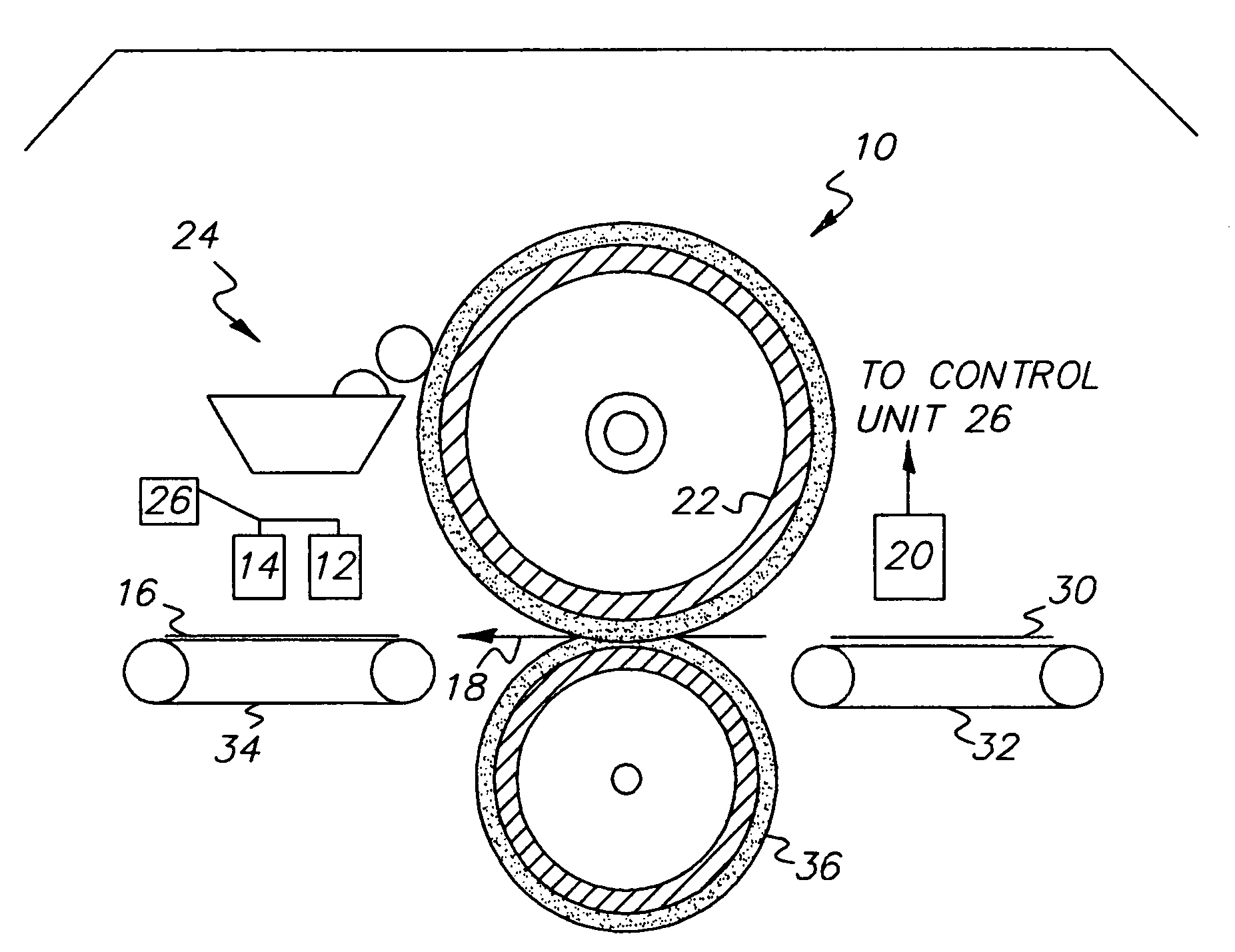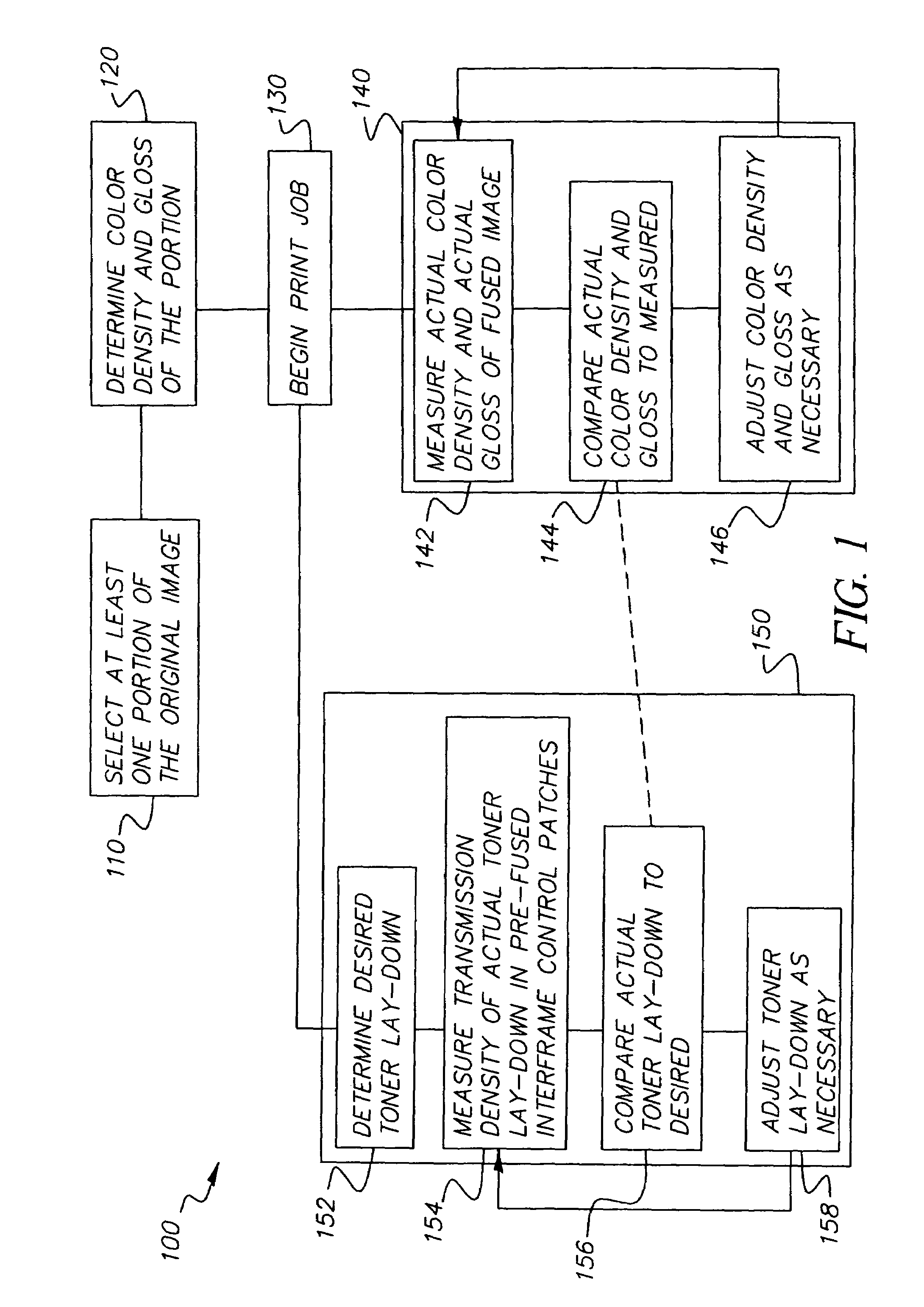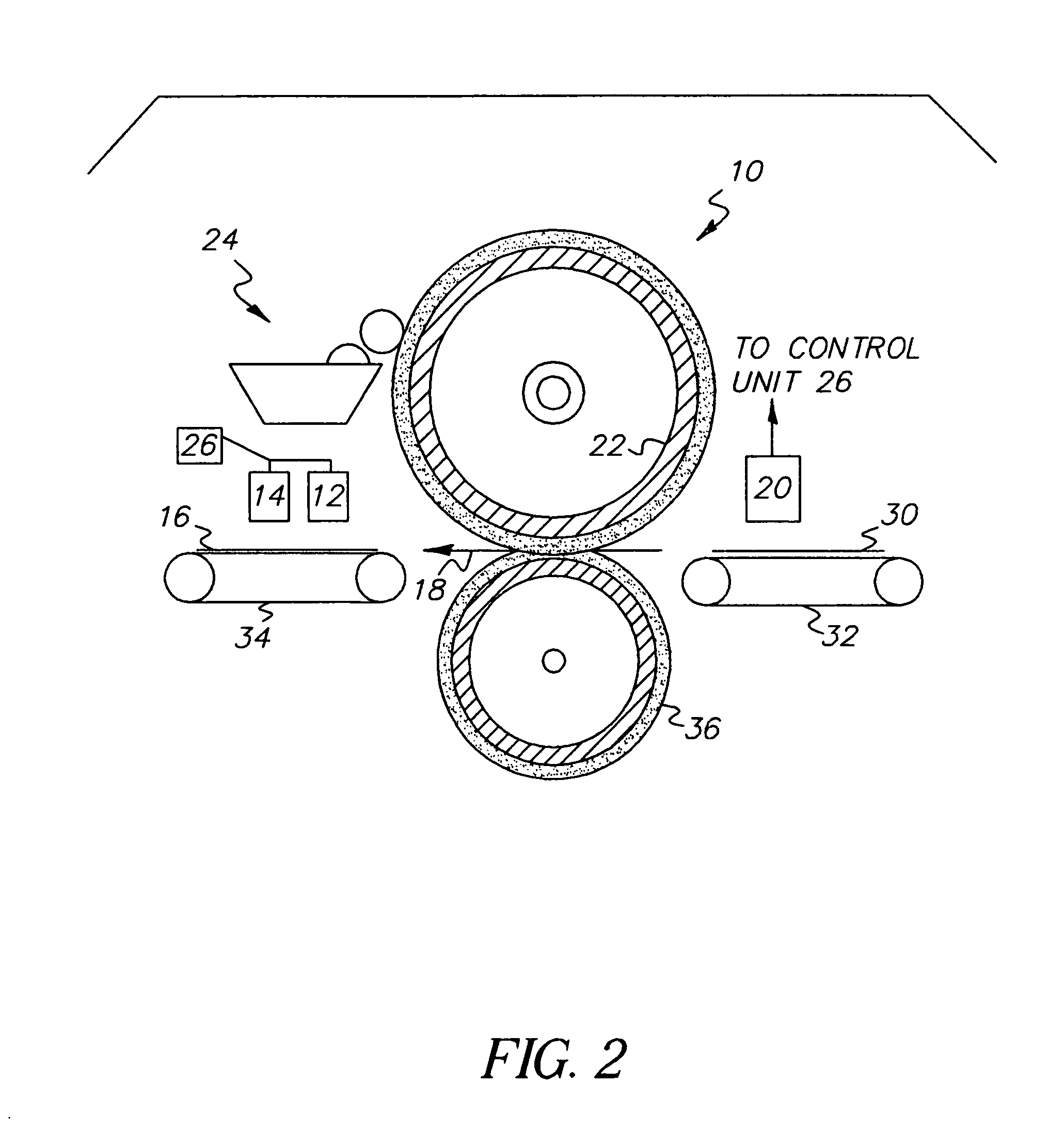Automated image appearance control method
- Summary
- Abstract
- Description
- Claims
- Application Information
AI Technical Summary
Benefits of technology
Problems solved by technology
Method used
Image
Examples
examples
[0035]In one example of the present invention, one of the color separation densities, such as that for cyan, may be low (˜0.1 density off from Cyan Dmax), and the gloss sensitivity of the four-color 280% black may also be low. The gloss value of the red (yellow and magenta), yellow, magenta, and black may also be used to determine whether the overall gloss setting is correct. If the gloss setting is correct, but cyan density is low, then only the cyan density may need to be adjusted upward. There is no need to change the fuser nip to change the gloss value. Further confirmation of this low cyan density may come from supplemental transmission density measurements of the pre-fused image as measured by transmission densitometer 20.
[0036]In the above example, however, the overall gloss value for all the patches may show an indication of gloss change from its preset value (for example, all the Dmax and high toner coverage (above about 150% toner coverage) patches gloss are lowered), but ...
PUM
 Login to View More
Login to View More Abstract
Description
Claims
Application Information
 Login to View More
Login to View More - R&D
- Intellectual Property
- Life Sciences
- Materials
- Tech Scout
- Unparalleled Data Quality
- Higher Quality Content
- 60% Fewer Hallucinations
Browse by: Latest US Patents, China's latest patents, Technical Efficacy Thesaurus, Application Domain, Technology Topic, Popular Technical Reports.
© 2025 PatSnap. All rights reserved.Legal|Privacy policy|Modern Slavery Act Transparency Statement|Sitemap|About US| Contact US: help@patsnap.com



